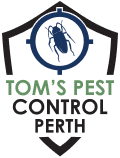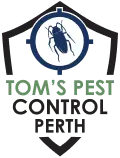Prompt, Affordable Same-Day Pest Control in Perth – From $129.
- Home
- Pest Treatments
- Termite Inspection & Treatment
- Ant Pest Control
- Bed Bug Treatment
- Beetle Pest Control
- Bird Control
- Borer Pest Control
- Cockroach Control
- Flea Control
- Fly Control
- Fox Trapping
- Mite Control
- Mosquito Pest Control
- Moth Control
- Possum Removal
- Silverfish Control
- Spider Control
- Wasp Control
- Rats And Mice Control
- End of Lease Pest Control
- Pest Management Perth
- General Pest Control
- Commercial Pest Control
- Office Pest Control
- Restaurants & Cafes Pest Control
- Hospitality Pest Control
- Education Facilities Pest Control
- Hospital & Aged Care Pest Control
- Pest Control Food Industry
- Factories & Warehouses Pest Control
- Government Buildings Pest Control
- Assets & Facilities Pest Management
- Farming and Agriculture Pest Control
- Strata Pest Control
- Construction Pest Control
- General Pest Control
- Termites
- Pest Info
- Pest Inspection
- Contact
- Home
- Pest Treatments
- Termite Inspection & Treatment
- Ant Pest Control
- Bed Bug Treatment
- Beetle Pest Control
- Bird Control
- Borer Pest Control
- Cockroach Control
- Flea Control
- Fly Control
- Fox Trapping
- Mite Control
- Mosquito Pest Control
- Moth Control
- Possum Removal
- Silverfish Control
- Spider Control
- Wasp Control
- Rats And Mice Control
- End of Lease Pest Control
- Pest Management Perth
- General Pest Control
- Commercial Pest Control
- Office Pest Control
- Restaurants & Cafes Pest Control
- Hospitality Pest Control
- Education Facilities Pest Control
- Hospital & Aged Care Pest Control
- Pest Control Food Industry
- Factories & Warehouses Pest Control
- Government Buildings Pest Control
- Assets & Facilities Pest Management
- Farming and Agriculture Pest Control
- Strata Pest Control
- Construction Pest Control
- General Pest Control
- Termites
- Pest Info
- Pest Inspection
- Contact
White Footed House Ants
(08) 6202 7096
Get A Free Quote Now!
Get A Free Quote Now!
White Footed House Ants
The white footed ants are characterised by their light-coloured feet, which gave them their name. While they are not known to bite or sting, they annoy homeowners, as they are frequently seen foraging in the kitchen, bathroom, and other parts of the house. A fully grown colony of white footed ants can consist of 8000 to 3 million individuals. For effective White ant control Perth, it is essential to address these infestations promptly to prevent further nuisance and potential damage.
The distinctive physical features of these ants make them easily recognisable. They are typically black or brown, measure around 1/8 inch in length, and lack a spine on their thorax, resulting in an irregularly rounded silhouette.
Furthermore, these hardworking insects possess six pale yellow-white legs and antennae, allowing them to explore their environment. As a result, this ant species is relatively widespread and can typically be observed performing its routine tasks in and around residential properties or gardens.
White-footed ants nest in dead wood but can also be found in piles of bricks, lumber, firewood, stones, and trash. They also thrive in places with dense vegetation or trees. In homes, they commonly build nests in wall voids, attics, plant pots, and around skylights and atriums.
White footed ants can occupy multiple sites surrounding their nest and exchange food and workers between these sites. They are found in urban and rural environments and can spread to new areas by transporting shipping containers or nursery stock.
These ants possess distinct reproductive mechanisms and can create extensive colonies through swarming and budding. A single colony contains numerous queens and workers.
Swarming occurs when reproductive ants develop wings and fly off to find a mate, creating a new colony. On the other hand, budding takes place when the queen and workers depart from the original colony in search of a suitable location for a new nest and the establishment of a new colony.
Eating Habits
White footed ants consume various foods, including sweet substances, deceased insects, and other protein sources. They can be found foraging along the trunks and branches of trees and shrubs that produce nectar. These ants utilise multiple foragers to scour for food.
Signs of White-Footed House Ant Infestation
Identifying a white-footed ant infestation involves observing trails of ants moving to and from their nests. These ants are often found in damp environments such as kitchens, bathrooms, areas with old termite galleries, decaying trees, and near skylights.
White Footed Ant Prevention
To prevent white footed ants from infesting your property, it’s advisable to eliminate potential harbourage sites, such as rocks, concrete objects, and wood. In addition, seal any cracks or crevices on the exterior of your structure to prevent their entry. It’s also worth considering hiring a licensed pest control company like ours to implement a preventative plan or address any existing infestation.
Tom's Pest Control – The Ant Removal Experts
As a leading pest control company, our technicians undergo specialised training to handle white footed ants, which can be challenging to eliminate due to their population size. Our white-footed ant removal service is crafted to eradicate the infestation without causing any disruptions to your home or business. We employ specialised treatments that directly target these ants, ensuring your family’s or employees’ safety.
Our technicians undergo specialised training to handle white-footed ants, which can be challenging to eliminate due to their population size. Our white-footed ant removal service is crafted to eradicate the infestation without causing any disruptions to your home or business. We employ specialised treatments that directly target these ants, ensuring your family’s or employees’ safety.
Call Us
When it comes to white footed ant removal, Tom’s Pest Control is a name you can rely upon. So get in touch with us today for a complimentary consultation and estimate. We’re excited to assist you in eliminating white-footed ants from your home or business.
Frequently Asked Questions
What Makes Whit Foot Ants Unique?
An interesting fact about white footed ants is that they are known for their unique social structure, which involves multiple queens within a single colony. Unlike many other ant species where a single queen is responsible for reproducing and leading the colony, white-footed ants have a cooperative system where several queens coexist and work together.
This cooperative behaviour among the queens allows white-footed ant colonies to grow rapidly and establish large populations. It also enhances their ability to expand into new areas, making them successful invasive species in some regions. The presence of multiple queens within a colony also provides a level of resilience and adaptability, as the loss of one queen does not significantly impact the survival and reproduction of the colony.
The cooperative nature of white footed ants and their unique social structure make them fascinating subjects for researchers studying ant behaviour and colony dynamics. Understanding their complex social interactions can provide valuable insights into the evolution and organisation of social insect societies.
How do White Footed Ants Behave?
White-footed ants are social ants that form large colonies with multiple queens. These colonies can contain numerous fertile members, resulting in their exceptional reproductive capacity. White footed ants don’t bite and primarily consume sugary foods such as honeydew. Nevertheless, they may occasionally feed on insects and other sources of protein.
How Serious Is the White Footed Ant Infestation Issue?
Eliminating white footed ants from your home can be difficult due to their persistence. Despite being non-aggressive and non-stinging, these ants must be eradicated from your property, as a single colony can house up to three million individuals. You may observe them in trailing lines on your walls, countertops, and floors when they are present in large numbers.
 (08) 6202 7096
(08) 6202 7096


